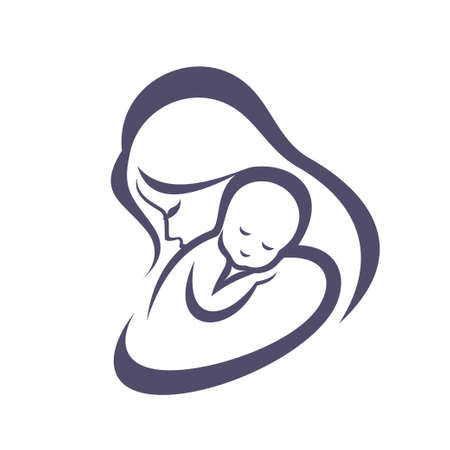Introduction to Antenatal Options
Preparing for the arrival of a baby is an exciting and sometimes overwhelming journey for expectant parents across the UK. Antenatal education plays a vital role in helping families feel informed, empowered, and confident as they approach birth and early parenthood. In the UK, antenatal classes are widely recognised as an essential part of pregnancy care, providing practical advice, emotional support, and evidence-based information tailored to local healthcare systems such as the NHS. Amongst the various choices available, hypnobirthing and traditional antenatal classes stand out as two of the most popular options. Both offer unique approaches to childbirth preparation—one focusing on relaxation techniques and mindset, the other on medical knowledge and practical skills. Understanding what each option entails can help you make the best choice for your personal needs and values as you prepare for your new arrival.
2. What is Hypnobirthing?
Hypnobirthing is a childbirth education method that emphasises relaxation, self-hypnosis, and mindful breathing to help expectant parents manage pain and reduce anxiety during labour and birth. Unlike some traditional antenatal classes, hypnobirthing focuses on understanding the physiology of birth and harnessing the power of the mind-body connection for a calmer birthing experience. The approach is rooted in the belief that fear and tension can increase discomfort during labour, so techniques are designed to break this cycle and promote confidence.
Core Principles of Hypnobirthing
- Relaxation: Guided visualisations, deep breathing exercises, and progressive muscle relaxation help reduce tension and support natural pain relief.
- Self-Hypnosis: Techniques to achieve a deeply relaxed state of mind, allowing you to respond more positively to contractions.
- Education: Understanding how your body works in labour helps replace fear with knowledge and trust in your body’s ability.
Common Hypnobirthing Techniques
| Technique | Description |
|---|---|
| Breathing Exercises | Slow, controlled breathing patterns to calm the nervous system and aid oxygen flow to mother and baby. |
| Guided Visualisation | Mental imagery to create positive associations with childbirth, often guided by scripts or recordings. |
| Affirmations | Positive statements repeated regularly to build confidence and dispel negative thoughts about labour. |
UK-Specific Resources for Hypnobirthing
The popularity of hypnobirthing has grown across the UK, with a variety of resources now available to suit different needs:
- The National Health Service (NHS) increasingly recognises hypnobirthing as a beneficial tool for managing birth anxiety. Some NHS trusts offer hypnobirthing workshops as part of their antenatal care.
- Private practitioners provide group or one-to-one sessions—often tailored for first-time parents or those seeking a refresher course.
- Online platforms such as The Hypnobirthing Association UK, KG Hypnobirthing, and The Positive Birth Company offer digital courses, downloadable audio tracks, and community support forums accessible nationwide.
Highlight: Focus on Relaxation & Anxiety Management
For many parents-to-be in Britain, the appeal of hypnobirthing lies in its holistic approach—addressing both mental wellbeing and physical preparation. By learning practical strategies for relaxation and anxiety management, participants report feeling more empowered throughout pregnancy and birth, regardless of where or how they choose to give birth.

3. Understanding Traditional Antenatal Classes
Traditional antenatal classes, commonly offered by the NHS and private providers across the UK, are designed to prepare expectant parents for labour, birth, and early parenthood. These sessions are typically led by midwives or qualified educators and can be attended in person at local hospitals, community centres, or virtually online. The structure of these classes often follows a set curriculum, spanning several weeks with each session lasting between 1-2 hours. Below is a comparison of typical features found in NHS-led versus private antenatal classes:
| NHS-led Antenatal Classes | Private Antenatal Classes | |
|---|---|---|
| Group Size | Larger groups (10-20 couples) | Smaller groups (4-8 couples) or one-to-one options |
| Cost | Free of charge | Fee-based (£100-£300+ per course) |
| Format | Structured curriculum, in-person or virtual | Flexible content and delivery, often more personalised |
| Duration | 4-6 weekly sessions | Varies, often shorter and more intensive if required |
Main Topics Covered in Traditional Antenatal Classes
- Pain Relief Options: Discussion about different types of pain relief available during labour, such as gas and air (Entonox), pethidine, epidurals, as well as non-medical methods like breathing techniques and relaxation.
- Labour and Birth: Information on recognising the signs of labour, stages of childbirth, when to go to hospital or call the midwife, and what to expect during delivery – including interventions like assisted births or caesarean sections.
- Birth Options: Overview of choices available within the NHS, such as water births, home births, and midwife-led units. Parents learn about their rights and how to create a birth plan that reflects their preferences.
- Newborn Care: Practical demonstrations on baby bathing, nappy changing, safe sleeping guidance following NHS recommendations, and tips on feeding (breastfeeding and bottle-feeding).
- Postnatal Wellbeing: Advice on recovering after birth, mental health support for both parents, and information on where to find additional help within the local community.
The primary aim of these classes is to equip parents with evidence-based knowledge and practical skills relevant to UK healthcare settings. Whether you choose an NHS-led or private class, you’ll have access to up-to-date guidance aligned with British standards—helping you feel more confident and supported throughout your pregnancy journey.
4. Key Differences Between Hypnobirthing and Traditional Antenatal Classes
When considering antenatal education in the UK, it is important to understand the key differences between hypnobirthing and traditional antenatal classes. Both approaches offer valuable support for expectant parents, but their philosophies, teaching methods, and intended outcomes can vary significantly. Below is a comparative overview to help you decide which option aligns best with your personal needs, values, and expectations.
| Aspect | Hypnobirthing | Traditional Antenatal Classes |
|---|---|---|
| Approach | Focuses on relaxation, breathing techniques, guided visualisation, and positive affirmations to reduce anxiety and pain during birth. | Centres on practical information about labour stages, pain relief options (including medical interventions), and newborn care. |
| Philosophy | Empowers women to trust their bodies, aiming for a calm and natural birthing experience wherever possible. Emphasises the mind-body connection. | Aims to provide evidence-based knowledge so parents can make informed choices; typically more clinical and pragmatic in style. |
| Environment | Classes often have a holistic or wellbeing atmosphere, sometimes held in community spaces or private studios; partners are encouraged to participate actively. | Frequently run by NHS midwives or health visitors in hospitals or local clinics; group settings are common and partners are also welcome. |
| Techniques Taught | Deep relaxation, controlled breathing, meditation, self-hypnosis scripts for labour and birth. | Pain management strategies (breathing, positions), signs of labour, when to go to hospital, breastfeeding basics, postnatal recovery tips. |
| Outcomes | Mums report feeling calmer and more in control during birth; some research suggests reduced need for intervention. May be particularly appealing for those hoping for minimal intervention births. | Parents tend to feel more prepared for a range of possible scenarios including complications; increased confidence in navigating NHS maternity services and understanding their choices. |
The choice between hypnobirthing and traditional antenatal classes depends largely on your personal approach to childbirth. If you value holistic wellbeing and want tools for relaxation and stress management during labour, hypnobirthing may be the best fit. However, if you prefer structured medical information about the birth process and want practical preparation for all possible outcomes—including hospital procedures—then traditional antenatal classes could be more suitable. Many parents in the UK find combining both approaches provides a well-rounded foundation for a positive birth experience.
5. Pros and Cons in the British Context
When deciding between hypnobirthing and traditional antenatal classes, it is important to consider both the advantages and disadvantages within the British context. Factors such as accessibility, NHS guidance, and local support networks all play a role in shaping your experience.
| Hypnobirthing | Traditional Antenatal Classes | |
|---|---|---|
| Accessibility | Often available privately with costs varying by region. Some NHS Trusts now offer hypnobirthing sessions, but availability can be limited compared to traditional courses. | Widely accessible through the NHS and community centres. Usually free or at low cost for expectant parents in the UK. |
| NHS Recommendations | Recognised by some NHS Trusts as beneficial for reducing anxiety and promoting positive birth experiences, but not yet universally adopted as standard care. | Strongly recommended by the NHS as part of routine pregnancy care. Covers essential topics like labour signs, pain relief options, and newborn care. |
| Support Networks | Tends to foster small group settings or one-to-one sessions, which may limit peer networking opportunities. However, online communities are growing in popularity across the UK. | Offers robust local support, providing opportunities to meet other parents-to-be in your area. These connections often extend beyond birth into parenthood support groups. |
| Cultural Fit | Growing acceptance, especially among those seeking a holistic approach. Some British families may find it less familiar or unconventional compared to mainstream practices. | Deeply embedded in UK maternity culture; most expectant parents attend these as a rite of passage during pregnancy. |
| Focus Areas | Emphasises relaxation techniques, breathing exercises, and positive visualisation for a calm birthing experience. | Covers practical medical information, pain relief options (including gas and air), birth planning, and immediate postnatal care advice. |
Making an Informed Choice
The Right Fit for Your Family
Your decision may depend on what you value most—whether its emotional preparation, evidence-based medical knowledge, or building local friendships. If you seek personalised relaxation strategies and a gentle approach to childbirth, hypnobirthing could be appealing. On the other hand, if you prefer comprehensive coverage of labour stages and NHS guidelines with strong community ties, traditional antenatal classes may be more suitable.
6. Making the Right Choice for You
Selecting the most suitable antenatal education style is a personal decision that depends on your individual preferences, health needs, and the resources available in your local area. Here are some practical steps and considerations for UK parents-to-be as you navigate this important choice:
Assess Your Preferences and Needs
Begin by reflecting on what you hope to gain from antenatal classes. Do you value relaxation techniques and a calm birthing environment, or do you prefer a more clinical, information-focused approach? Consider if you have specific concerns such as anxiety about labour, desire for partner involvement, or particular birth plans like home birth or water birth.
Consider Health Factors
If you have any medical conditions or are considered high-risk, it’s essential to consult with your midwife or GP before choosing a course. Some hospitals and community centres offer tailored classes for parents with additional health needs.
Explore Local Resources
The availability of hypnobirthing and traditional antenatal classes can vary across the UK. NHS trusts typically provide free or low-cost traditional classes, while hypnobirthing courses may be offered privately or through charities at various price points. Use NHS websites, local Facebook groups, or platforms like Netmums to research options near you.
Comparison Table: Choosing the Best Fit
| Factor | Hypnobirthing | Traditional Antenatal Classes |
|---|---|---|
| Focus | Relaxation & Mindset | Medical Information & Practical Skills |
| Partner Involvement | Often highly encouraged | Varies by provider |
| Setting | Mainly private; some NHS options | Mainly NHS/community-based |
| Cost | Usually paid (some free/low-cost options) | Mainly free or low-cost via NHS |
| Suitability for High-Risk Pregnancies | Check with healthcare provider first | NHS classes often tailored for medical needs |
| Availability in Rural Areas | May be limited; online options exist | NHS classes widely available but may require travel |
Tips for Making Your Decision:
- Ask your midwife about recommended courses in your area.
- If possible, attend a taster session for both styles before committing.
- Speak to other local parents—word of mouth can provide valuable insights into class quality.
- If cost is a concern, inquire about subsidised places or community-run sessions.
- Remember that it’s okay to combine elements from both approaches if that suits you best.
The right choice is ultimately the one that helps you feel informed, empowered, and supported on your journey to parenthood. Whatever you decide, engaging in antenatal education is a positive step towards a confident and healthy birth experience in the UK context.


